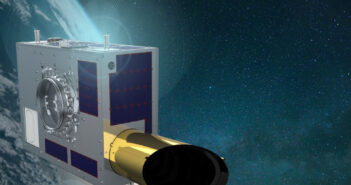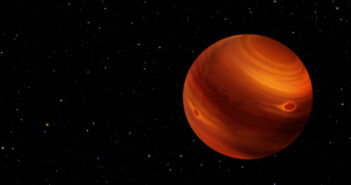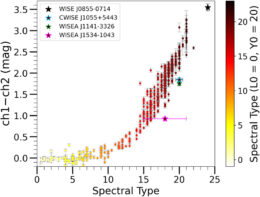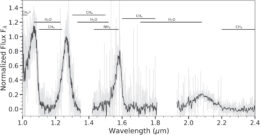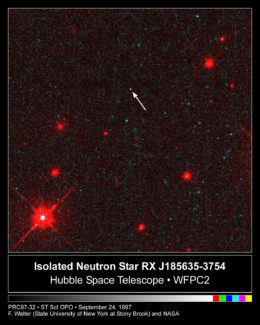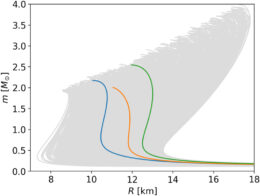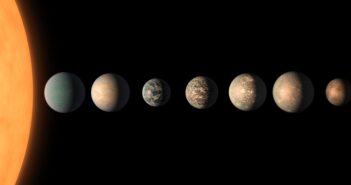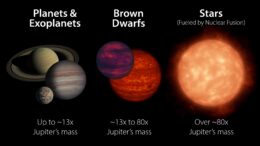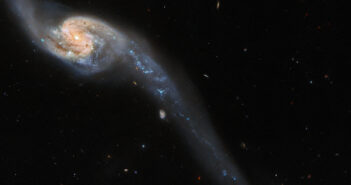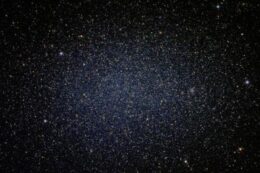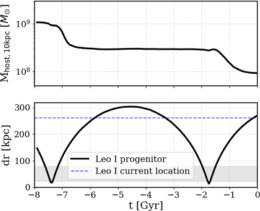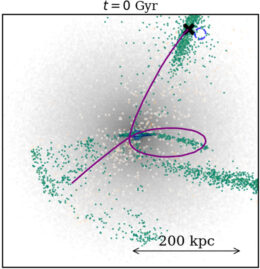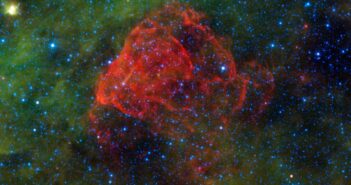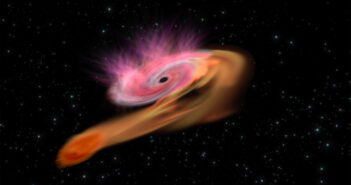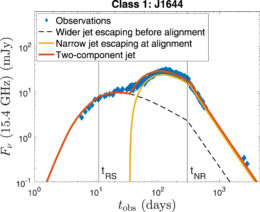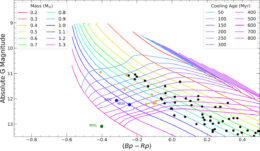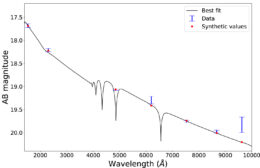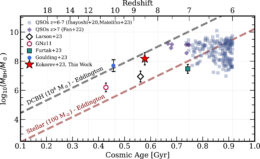Editor’s Note: Welcome to the first post of the new Monthly Roundup series! Each month, we’ll be providing a broader view of one astronomical topic by exploring it through the lens of 3-5 recent research articles.
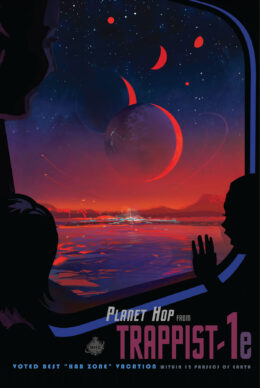
The closely spaced rocky planets of the TRAPPIST-1 system inspired scientists and non-scientists alike. [NASA/JPL]
TRAPPIST-1, a cool and unassuming red dwarf star barely larger than Jupiter, became world famous when researchers discovered seven planets orbiting it in 2016–2017. The discovery and characterization of this septuple system was an international effort involving numerous ground- and space-based observatories. Notably, observations from the Transiting Planets and Planetesimals Small Telescope (TRAPPIST) first revealed the innermost two planets and hinted at a third. Then, a three-week observing campaign with the Spitzer Space Telescope clarified that the proposed third planet was actually
four or five more planets. At last, 79 days of Kepler Space Telescope data confirmed the presence of the outermost planet and brought the tally to seven planets. All of the planets, cataloged as TRAPPIST-1 b through h, are roughly the size of Earth, and as many as four of them are thought to lie within their star’s habitable zone.
The large number of Earth-like and potentially habitable planets, all orbiting their host star with periods of less than three weeks, and at “only” 41 light-years from Earth, make the TRAPPIST-1 system a prime target for atmospheric characterization. Now, JWST has turned its gigantic golden eye toward this promising system, giving researchers new data to scrutinize and new challenges to overcome.
Through (Atmospheres) Thick and Thin
First up, the innermost of the TRAPPIST-1 planets. Previous observations show that none of the planets have clear (i.e., cloudless) atmospheres made of hydrogen, but we’ve yet to rule out other atmospheres, including those rich in familiar gases like carbon dioxide (CO2), nitrogen, or oxygen.
Jegug Ih (University of Maryland) and collaborators attempted to place constraints on the presence of an atmosphere enveloping TRAPPIST-1 b by analyzing observations taken at 15 microns (1 micron = 10-6 meter) as the planet ducked behind the star. The team modeled these secondary eclipse observations (the primary eclipse happens when the planet passes in front of the star) to extract information about the planet’s atmosphere.
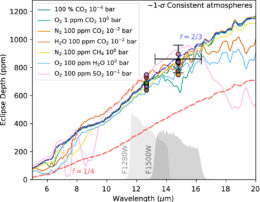
Eclipse spectra of atmospheric models of TRAPPIST-1 b consistent with the JWST observations to within one sigma. Click to enlarge. [Adapted from Ih et al. 2023]
Ih’s team ruled out CO
2-containing atmospheres yielding surface pressures higher than about a third of Earth’s, and thin, Mars-like atmospheres that are rich in CO
2 also got the boot. If somehow — though the team finds it unlikely — the planet’s atmosphere contains no compounds that strongly absorb mid-infrared light, the planet could even host a thick atmosphere with ten times the surface pressure of Earth’s.
Considering instead the possibility that TRAPPIST-1 b has no atmosphere, Ih and collaborators used the JWST observations to constrain the composition of the planet’s surface. Bare rock is most likely, containing metals and volcanic rocks. Expect to hear more about this planet’s atmosphere and surface soon: additional secondary eclipse observations were performed at a slightly shorter wavelength of 12.8 microns in July 2023.
Stellar Interference

Two transit observations (panels a and b) with best-fit stellar contamination models (black lines). Atmospheric modeling of contamination-corrected data (panels c and d). Click to enlarge. [Lim et al. 2023]
The holy grail of atmospheric characterization is transmission spectroscopy: assessing the spectral fingerprints left behind as light from the host star passes through a planet’s atmosphere.
Olivia Lim (University of Montreal) and collaborators presented the first JWST transmission spectra of TRAPPIST-1 b. The spectra show signs of stellar contamination: features on the star’s surface that complicate the analysis of a planet’s spectrum. In the first of two transits, Lim’s team saw signs of starspots, while the second transit was marred by bright regions called faculae.
To extract information about the planet’s atmosphere from these contaminated spectra, Lim and coauthors used model fitting to account for the starspots and faculae before modeling the planet’s atmospheric spectrum. Using this method, the team could rule out hydrogen-rich, cloudless atmospheres, but they couldn’t draw any conclusions about other atmospheric compositions. The authors noted how important this issue will be going forward, and they called for more observations and better modeling of the surfaces of cool stars, emphasizing one of the tenets of exoplanet science: Know thy star, know thy planet.
Reconsidering TRAPPIST-1 c
Moving farther out from the star, a team led by Andrew Lincowski (University of Washington) analyzed JWST secondary eclipse observations of TRAPPIST-1 c. Previous analysis of these observations suggested that the planet lacks an atmosphere or has a thin atmosphere mainly containing oxygen. Using atmospheric models, Lincowski and collaborators explored a wider range of atmospheric compositions than previous work. Their possible atmospheres included a steam atmosphere, created by water loss from the hot planet — its equilibrium temperature is nearly 400K (260℉ or 127℃) — and a Venus-like CO2 atmosphere that might arise after all the water is lost.

Modeled spectra (lines) and eclipse depths (circles) at 15 microns compared to the observed eclipse depth (black circle). Click to enlarge. [Lincowski et al. 2023]
Similar to previous work, Lincowski’s team found that TRAPPIST-1 c could host a thin, oxygen-rich atmosphere with a small amount of CO
2, but other compositions were possible: thick, oxygen-rich atmospheres with a smidge of CO
2; thin, oxygen-rich atmospheres with a hint of CO
2 and water; and even steam atmospheres remain in the mix. As always, more data are needed!
As the Inner Planets, So Too the Outer Planets?
Although detailed modeling has found pockets of parameter space in which atmospheres on the two innermost planets of the TRAPPIST-1 system are possible, we still can’t rule out the possibility that these planets have no atmospheres. If TRAPPIST-1 b and c are bare rocks, does that mean the other five planets in the system lack atmospheres, too? Answering this question requires understanding what happened before TRAPPIST-1 settled onto the main sequence, when the star pummeled its planets with atmosphere-eroding high-energy radiation. Joshua Krissansen-Totton (University of Washington) modeled the evolution of the atmospheres and interiors of TRAPPIST-1 b and c to understand which properties, including the amount of high-energy radiation from their host star, result in the two planets being airless. These properties are then applied to other planets in the system to see if they could hang onto their atmospheres until today.
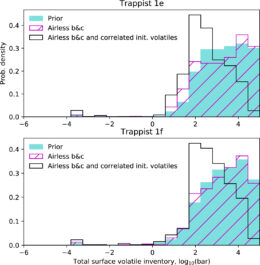
The probability of TRAPPIST-1 e (top) and f (bottom) having atmospheres is largely unaffected by the inner planets being airless. [Krissansen-Totton 2023]
Krissansen-Totton found that because the two innermost planets of the system are so close to the star, they lack atmospheres under a wide range of conditions. These same wide-ranging conditions increase the possibility that TRAPPIST-1 d lacks an atmosphere, but the e and f planets are barely affected. This means that we don’t need to ring the alarm bells if it turns out that the b and c planets don’t have atmospheres: planets farther out don’t necessarily have the same fate. Of course, there is another possibility: that all of the planets in the system started out poor in atmosphere-building atoms and molecules, and they all lack atmospheres today. We’ll have to turn JWST toward the remaining planets to find out.
Life May Find a Way — but Do We Have a Way to Find It?
A pressing, million-dollar question: If one or more planets in the TRAPPIST-1 system were to host life, would JWST even be able to detect it? Victoria Meadows (University of Washington) and collaborators explored that question, using photochemical models to determine whether JWST is sensitive enough to detect the spectral signatures of molecules that indicate the presence of life, called biosignatures.
Meadows’s team modeled spectra of TRAPPIST-1 d and e, both of which may lie within the star’s narrow habitable zone. They investigated two atmospheric compositions: one resembling modern-day Earth and one similar to Earth during the Archean Eon — an ancient period during which Earth’s atmosphere was rich in methane and poor in oxygen.

Example of a simulated transmission spectrum and data. Click to enlarge. [Meadows et al. 2023]
By simulating the chemistry of these atmospheres, calculating their spectra, and considering JWST’s observing capabilities, the team found that an atmospheric composition similar to that of modern-day Earth will be challenging to detect, though an Archean-Earth-like atmosphere is more promising. One of the most promising biosignatures for either time period is the presence of both CO
2 and methane in amounts that disagree with the predictions of photochemistry. Ultimately, Meadows’s team doesn’t fully rule out the possibility that JWST could detect life on TRAPPIST-1 d or e, though the detection is likely to be challenging: even if we find CO
2 and methane in promisingly disequilibrium amounts, we’ll have to be diligent about showing that no other process could be responsible.
Citation
“Constraining the Thickness of TRAPPIST-1 b’s Atmosphere from Its JWST Secondary Eclipse Observation at 15 μm,” Jegug Ih et al 2023 ApJL 952 L4. doi:10.3847/2041-8213/ace03b
“Atmospheric Reconnaissance of TRAPPIST-1 b with JWST/NIRISS: Evidence for Strong Stellar Contamination in the Transmission Spectra,” Olivia Lim et al 2023 ApJL 955 L22. doi:10.3847/2041-8213/acf7c4
“Potential Atmospheric Compositions of TRAPPIST-1 c Constrained by JWST/MIRI Observations at 15 μm,” Andrew P. Lincowski et al 2023 ApJL 955 L7. doi:10.3847/2041-8213/acee02
“Implications of Atmospheric Nondetections for Trappist-1 Inner Planets on Atmospheric Retention Prospects for Outer Planets,” Joshua Krissansen-Totton 2023 ApJL 951 L39. doi:10.3847/2041-8213/acdc26
“The Feasibility of Detecting Biosignatures in the TRAPPIST-1 Planetary System with JWST,” Victoria S. Meadows et al 2023 Planet. Sci. J. 4 192. doi:10.3847/PSJ/acf488
